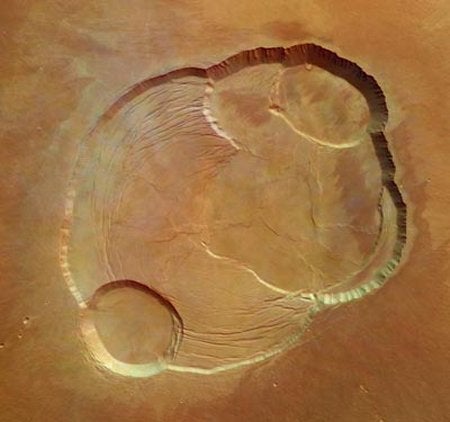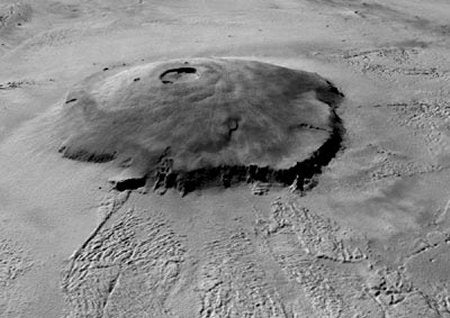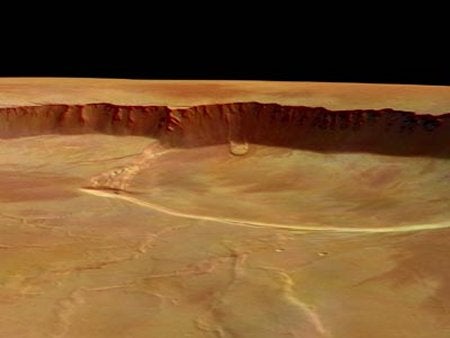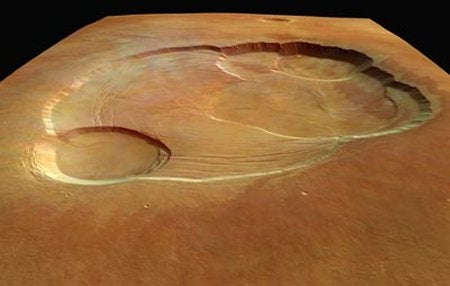Robert Burnham relates the incredible success of NASA’s Mars rover Opportunity in the May issue of Astronomy. While the British-led Beagle 2 appears to be lost, the European Space Agency’s Mars Express is still orbiting the Red Planet and has produced amazing imagery. Shown here are some images of the complex caldera on Olympus Mons that were taken by the orbiter.
The summit of Olympus Mons
Mars Express returned this view of the complex caldera at the summit of Olympus Mons on Mars. The volcano is the tallest in the solar system, rising to an average elevation of 13 miles (22 kilometers). Its complex summit crater, or caldera, has a depth of 1.9 miles (3 km). Mars Express took this first-ever high-resolution color image of the volcano’s complete caldera in January 2004 from an altitude of 170 miles (273 km).
By draping a Mars Orbiter Camera wide-angle image mosaic over topographic data from the spacecraft’s Mars Orbiter Laser Altimeter, scientists produced this perspective view that shows Olympus Mons in its entirety.
Images from the High-Resolution Stereo Camera (HRSC) on Mars Express can be used to create digital elevation models, allowing us to view its targets from different angles.
This image shows about 25 miles (40 km) of the southern part of the Olympus Mons caldera. The scene reveals tongue-shaped mass-movement features on the southern wall and striations produced by tectonic faults created when the volcano’s magma chamber emptied and the caldera collapsed. Olympus Mons shows many episodes of lava production followed by the collapse of the active part of the caldera.
Zooming out gives us an oblique view of the entire caldera complex. The previous image can be seen in the upper right of this view, which spans about 63 miles (102 km). The image is centered at martian latitude 18.3°N and longitude 227°E. For clarity, the Mars Express digital elevation models shown in this gallery exaggerate terrain heights by a factor of 1.8.













